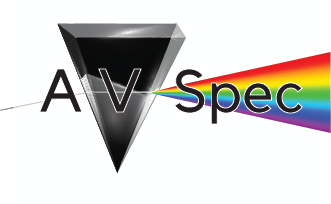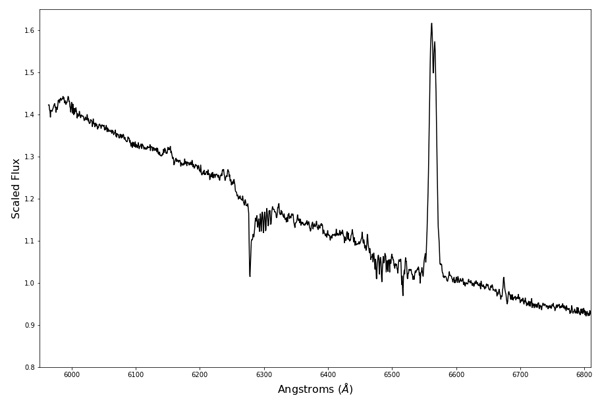A new database from the American Association of Variable Star Observers enables astronomers (amateur and professional alike) to store data from any variable object in the sky.
A new era of variable star astronomy starts as the American Association of Variable Star Observers (AAVSO) now welcomes spectra from the AAVSO community. The new AAVSO Spectroscopic Database (AVSpec) offers the opportunity for observers worldwide to participate in scientific projects using their own spectroscopic equipment. Alongside light-curve data in AAVSO’s photometric database, the AAVSO International Database (AID), spectra in AVSpec will provide new insights on the properties of variable stars, as well as opportunities for more exciting discoveries.

“George and I looked at each other and both went ‘huzzah!’” John Weaver explains of his “eureka!” moment in developing AVSpec, along with the help of George Silvis, long-time AAVSO volunteer and recent consultant. After three years of mind-bending work, AVSpec is now processing observation submissions and open to use. The database is “open data,” which means it is free of charge, so that both non-AAVSO and AAVSO members can access AVSpec to view and download the data contributed by AAVSO observers.
A Spectroscopic Database
Spectroscopy is the study of electromagnetic radiation wavelengths, each of which is emitted by an object or produced through an object’s interaction with other matter. In spectroscopy, a spectrum is a range of light separated into different wavelengths, each which projects a unique brightness.
The AAVSO’s Spectroscopy Observing Section leader, Ryan Maderak, is responsible for AVSpec user resources and collaboration. He can elaborate at length on the ways in which observing spectra can answer questions poised in human minds since our collective eyes first gazed starward.
“In short,” Maderak says, “the database will fully open the door to science that has only been possible on a restricted basis before now.”
Beginner to experienced spectroscopists are encouraged to submit data to AVSpec. Crucial data can be observed and uploaded to the database with and without high-tech equipment.
Weaver, an astrophysicist working towards his Ph.D. in the evolution of galaxies, developed most of the code behind the database. He encourages those who want to increase their proficiency in spectroscopy to take a CHOICE course. The more data submitted by more observers, the better: Maderak stresses that, “One piece at a time, our users build a foundation for original scientific results.” Spectroscopic observer volunteers with interests in an array of astronomical objects increase the number of once-in-a lifetime events documented.
“[AAVSO] understands that some observers may [see] a nova in outburst. That data is very, very, very important to catch,” Weaver emphasizes. “[The event] doesn’t last for a long time. And once it’s gone, it’s gone.”

A key collaborator in the construction of AVSpec was an administrator of the Database of Be Star Spectra (BeSS), which archives professional and amateur spectra of Be stars. Before launching AVSpec, numerous volunteers from the AAVSO community tested the code and provided valuable feedback on tool functionality and observer training material. Essentially, AVSpec is a community project — it was born through feedback from the AAVSO community, and will grow through continuous feedback and thanks to the community’s continuous support.
Trust But Verify
AAVSO’s verification procedure contributes to setting AVSpec apart from other spectroscopic databases. All spectra submitted to the database are hand-verified.
“The AAVSO is proud of the careful vetting of the data submitted to its databases,” AAVSO CEO and Director Stella Kafka explains. “Even the most experienced observers may submit discrepant data due to software glitches or unidentified instrumental defects. By checking every spectrum, we ensure high-quality data for the spectra to be of use in scientific projects. We also have the opportunity to give constructive feedback to our observers as they improve their observing, data reduction, and analysis skills. This is part of the scientific process.”
As a repository of spectral data that has the backbone of an effective verification process and a strong community of dedicated observers collecting and submitting data on an array of celestial objects, AVSpec will be beneficial to astronomers and the scientific discoveries they make. It will even change the way research is conducted, since AVSpec is supported by a complementary repository of photometric data. More data than ever before can now be found at AAVSO.
“This spectroscopic database, along with the educational material and manual accompanying it, is a long-awaited resource for the AAVSO community,” Kafka affirms. “We are excited to introduce a new chapter in the Association’s long history of collecting data.”
 4
4









Comments
David-Wickholm
November 15, 2019 at 9:14 am
AV Spec's logo could use some revision. Blue light should be refracted greater angles than red since refractive index increases with wavelength. Unless this is a really weird glass or combination of glasses and gratings, they have refraction backwards.
You must be logged in to post a comment.
alphapsa
November 16, 2019 at 4:29 am
Well spotted... no dispersion inside the prism, and the refraction angles are all wrong... unless the surrounding medium is also not air! See https://en.wikipedia.org/wiki/Prism
Cool project, though.
You must be logged in to post a comment.
Anthony Barreiro
November 18, 2019 at 4:22 pm
I would appreciate an explanation of the spectrum of Theta Circini. What causes the absorption peak at approximately 6275 Angstroms and the emission peaks around 6560 Angstroms? What does this spectrum tell us about the star? The very brief wikipedia article states that Theta Cir is an astrometric binary and a chemically peculiar Be star. My curiosity has been whetted. What does all this mean?
You must be logged in to post a comment.
alphapsa
November 19, 2019 at 7:37 pm
The absorption feature looks like telluric molecular oxygen and the emission line is H-alpha. The H-alpha line is thought to originate from UV fluoresence of circumstellar hydrogen gas ejected by this Be star. The double peak of H-alpha could be due to doppler shift from the orbital motion of the gas. The molecular oxygen absortion just tells us that we have an oxygenated atmosphere on Earth 🙂
You must be logged in to post a comment.
You must be logged in to post a comment.